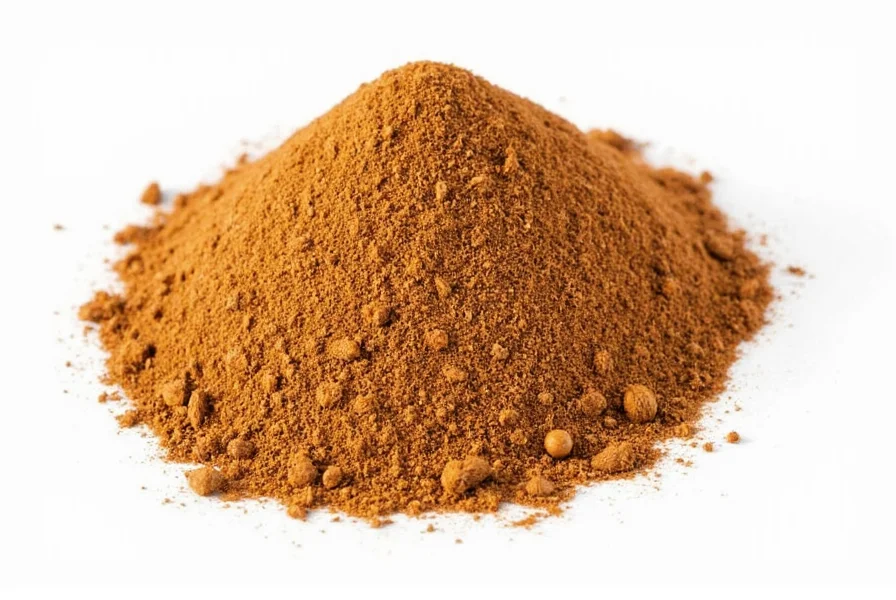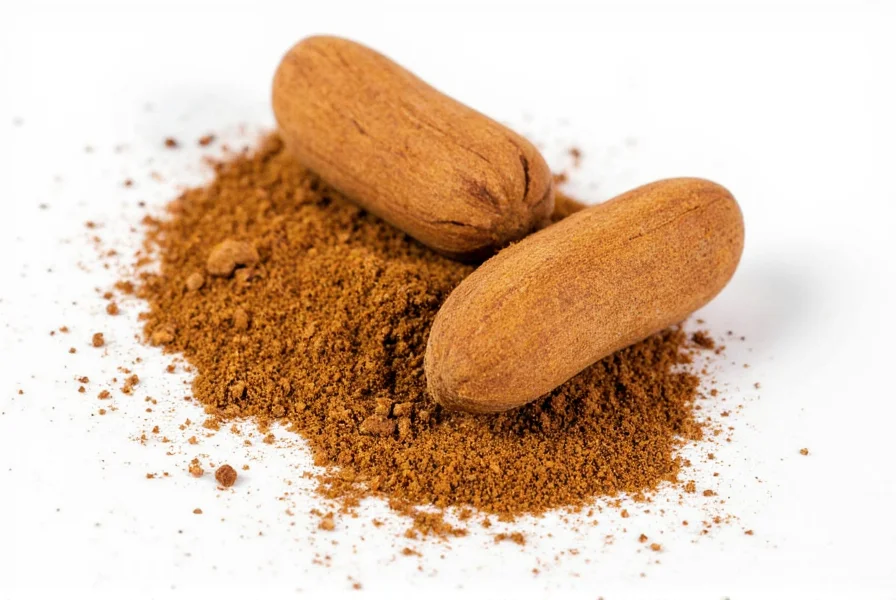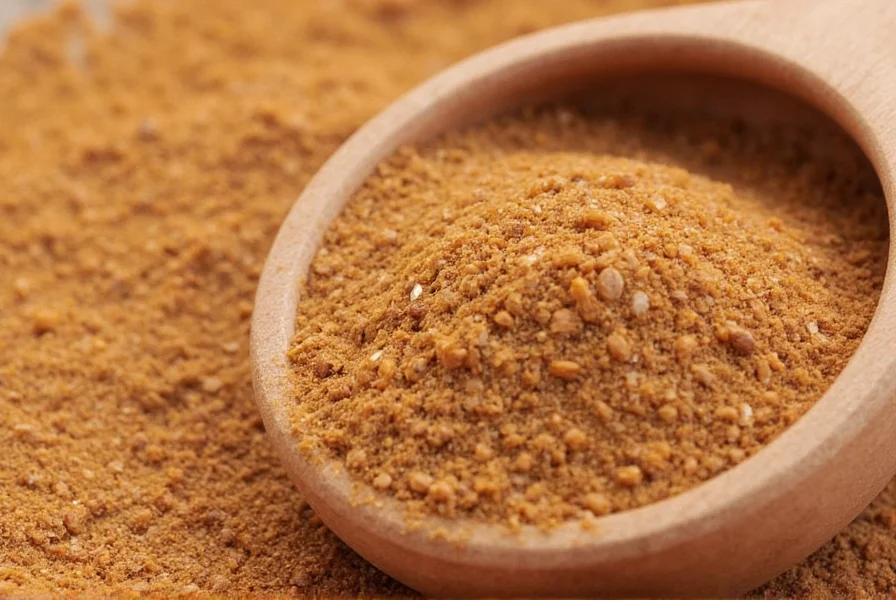Understanding the nuances of ground nutmeg spice transforms ordinary dishes into extraordinary culinary experiences. This versatile spice, derived from the same seed as whole nutmeg, provides instant convenience but requires careful handling to preserve its delicate flavor compounds. Professional chefs and home cooks alike benefit from knowing precisely how to incorporate this warm, slightly sweet spice with notes of clove and pepper into their cooking repertoire.
What Exactly Is Ground Nutmeg Spice?
Ground nutmeg comes from the seed of the Myristica fragrans tree, native to the Banda Islands in Indonesia. After harvesting, the seed is dried for 6-8 weeks until the hard shell forms, then cracked open to reveal the nut inside. This seed undergoes further drying before being mechanically ground into the fine powder sold as ground nutmeg spice.
The grinding process exposes more surface area to air, causing ground nutmeg to lose its essential oils much faster than whole nutmeg. This fundamental difference explains why ground nutmeg vs whole nutmeg represents such an important consideration for serious cooks. While whole nutmeg can remain potent for several years when stored properly, ground nutmeg typically maintains peak flavor for only 6-12 months.

Culinary Applications and Flavor Profile
Ground nutmeg delivers a warm, sweet-spicy flavor with subtle notes of clove, pepper, and pine. Its complex profile works beautifully in both sweet and savory applications, though it requires careful measurement due to its potency. Understanding what does ground nutmeg taste like helps cooks determine appropriate usage.
Traditional applications include:
- Custards, eggnog, and baked goods (¼ teaspoon per recipe)
- Cheesy dishes like macaroni and cheese or béchamel sauce
- Meatloaf, sausages, and certain meat marinades
- Certain cheese sauces and vegetable preparations
- Classic French béchamel sauce (a pinch enhances dairy notes)
When working with ground nutmeg, remember that how to use ground nutmeg in cooking differs slightly from whole nutmeg. Since it's already at maximum extraction, add it later in the cooking process than you would whole nutmeg to prevent flavor degradation from prolonged heat exposure.
Proper Usage Guidelines for Optimal Flavor
Ground nutmeg's potency means less is often more. Most recipes require only ⅛ to ¼ teaspoon. Overuse creates bitterness that overwhelms other flavors. Consider these professional tips for when to add ground nutmeg in recipes:
| Dish Type | Recommended Amount | Best Addition Point |
|---|---|---|
| Custards & Baked Goods | ⅛-¼ tsp | With dry ingredients |
| Cheese Sauces | ⅛ tsp | After sauce thickens |
| Meat Dishes | ⅛ tsp | During mixing, before cooking |
| Vegetable Preparations | Pinch | Final seasoning |
Unlike whole nutmeg which benefits from early addition to allow flavor extraction, ground nutmeg's volatile compounds degrade with prolonged cooking. For sauces and soups, add ground nutmeg during the last 5-10 minutes of cooking. In baked goods, incorporate it with other dry ingredients to ensure even distribution without overmixing.
Storage Best Practices for Maximum Freshness
Proper storage directly impacts ground nutmeg shelf life and flavor intensity. Follow these evidence-based storage methods:
- Store in an airtight container away from light and heat
- Keep away from steam-producing appliances like kettles or dishwashers
- Refrigeration extends freshness but requires careful moisture control
- Freezing in vacuum-sealed containers preserves flavor for up to 18 months
The most reliable indicator of degraded ground nutmeg is diminished aroma. Fresh ground nutmeg should release a strong, warm scent when the container opens. If you must shake the container to detect any aroma, the spice has likely lost significant flavor compounds. This simple test helps determine whether your ground nutmeg has gone bad without wasting precious ingredients in testing.

Health Aspects and Safety Considerations
Ground nutmeg contains myristicin, a compound that in moderate culinary amounts contributes to its distinctive flavor. Traditional medicine systems have used nutmeg for various purposes, though modern science confirms that health benefits of ground nutmeg in normal culinary usage are primarily related to its antioxidant properties.
Important safety considerations:
- Culinary amounts (¼ tsp or less per serving) are generally recognized as safe
- Excessive consumption (1-2 whole nutmegs or equivalent ground) may cause adverse effects
- Pregnant women should consume in normal food amounts only
- Nutmeg contains compounds that may interact with certain medications
When used appropriately as a seasoning, ground nutmeg contributes valuable phytochemicals without significant health risks. Its role in traditional spice blends across multiple cultures demonstrates its longstanding place in global culinary traditions.
Substitution Options When Ground Nutmeg Is Unavailable
When you need ground nutmeg substitution options, consider these alternatives with appropriate adjustments:
- Whole nutmeg freshly grated: Use ¼ teaspoon freshly grated for every ⅛ teaspoon ground (1:2 ratio)
- Mace powder: Use half the amount of mace (more potent than nutmeg)
- Pumpkin pie spice: Use ⅜ teaspoon per ¼ teaspoon nutmeg (contains nutmeg plus other spices)
- Allspice: Use ⅛ teaspoon per ¼ teaspoon nutmeg (stronger flavor profile)
Remember that no substitute perfectly replicates ground nutmeg's unique flavor profile. The best approach for ground nutmeg replacement depends on the specific recipe and desired outcome. In delicate dishes like béchamel or custards, finding an adequate substitute proves particularly challenging due to nutmeg's distinctive role.
Frequently Asked Questions
How long does ground nutmeg stay fresh?
Ground nutmeg typically maintains optimal flavor for 6-12 months when stored properly in an airtight container away from light and heat. Whole nutmeg lasts significantly longer (2-3 years) because the grinding process exposes more surface area to air, accelerating flavor loss. The best test for freshness is aroma strength - if you need to shake the container to detect scent, it's time to replace it.
Can I substitute ground nutmeg for whole nutmeg in recipes?
Yes, but with important adjustments. Use half the amount of ground nutmeg compared to whole nutmeg called for in recipes (¼ teaspoon ground = ½ teaspoon freshly grated). Ground nutmeg delivers immediate flavor but loses potency faster, while whole nutmeg requires grating but provides fresher, more complex flavor when added early in cooking. For best results in sauces, add ground nutmeg later in the cooking process than you would whole nutmeg.
Why does my ground nutmeg taste bitter?
Bitterness in ground nutmeg usually indicates one of three issues: excessive quantity (it's very potent - start with ⅛ teaspoon), degraded spice (old ground nutmeg loses its sweet notes first), or prolonged cooking time (add during the last 5-10 minutes of cooking). Fresh ground nutmeg should have a warm, sweet-spicy flavor without bitterness. If bitterness persists with fresh spice, you may be using too much for the recipe's scale.
Is ground nutmeg safe to consume daily?
Yes, ground nutmeg is safe to consume daily in normal culinary amounts (typically ⅛ to ¼ teaspoon per serving). The myristicin compound in nutmeg becomes concerning only at significantly higher doses (1-2 whole nutmegs or equivalent ground). In standard cooking and baking quantities, ground nutmeg contributes flavor and antioxidants without safety concerns for most people. Pregnant women should consult their healthcare provider about appropriate consumption levels.











 浙公网安备
33010002000092号
浙公网安备
33010002000092号 浙B2-20120091-4
浙B2-20120091-4